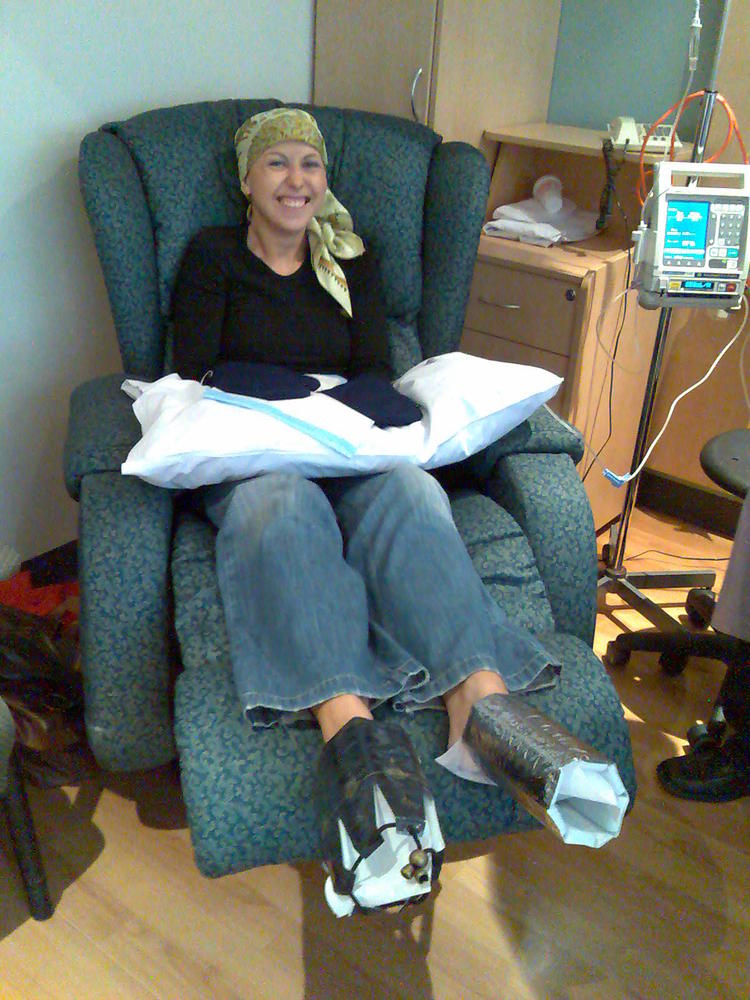DNA quadruple helix
Interview with
Cancer will affect one person in every three listening to this programme. But this  week scientists at Cambridge University have uncovered a genetic pattern that crops up more commonly in cancerous cells and may account for why cancers show abnormal patterns of growth. The structures are DNA quadraplexes - they're a double, double helix - of DNA and they seem to affect how genes get turned on or turned off. Chris Smith spoke to Shankar Balasubramaniam who discovered them...
week scientists at Cambridge University have uncovered a genetic pattern that crops up more commonly in cancerous cells and may account for why cancers show abnormal patterns of growth. The structures are DNA quadraplexes - they're a double, double helix - of DNA and they seem to affect how genes get turned on or turned off. Chris Smith spoke to Shankar Balasubramaniam who discovered them...
Shankar - Everyone knows about the double helix that Watson and Crick discovered in Cambridge in 1953 and it arises because there are two strands of DNA with four letters that communicate with each other in a particular way - Gs and Cs and Ts and As.
Chris - It looks like a twisted up ladder effectively, doesn't it?
Shankar - It is, it's like a helical staircase. Now what we've been studying in my lab is a quadruple helix; you can think of it almost as a ladder with four strands instead of two.
Chris - I'm just trying to picture that.
Shankar - Well, the structure in itself - if you can imagine a cube where you twist the upper part and the lower part in opposite directions - that's what it looks like. It's rather like a knot, it's not a continuous structure, it's like a knotted folded structure. And for many years, we've known in a test tube that if you have a bit of DNA that's rich in one of the letters (the G letter), that these types of structures can form spontaneously. What we've been interested in is, are these structures for real: do they occur in cells, in biology, in nature and, if so, why and what are they doing?
Chris - How did you do that?
Shankar - So the way we've gone about it; we've synthesised organic molecules that recognise this structure, so these act as probes that can seek out these structures and light them up. We did an experiment that we published in 2013, which happened to be the 60th anniversary of the double helix discovery, in which we had human cells; we used these probes and you could see little spots lighting up in the nucleus and these spots are where these structures were forming.
Chris - But that doesn't tell us whether or not they're just an artifact, whether they're there for real or whether they really do anything to the cell, does it?
Shankar - So in order to start looking at whether there's anything functional going on there are two approaches we've used. One is to actually seek out where these things are forming and also when and that's what this latest paper has been exploring. We've used the same probes to locate exactly where these structures form. The way we do that is we use a probe to bind to where these structures form and then we use a method of decoding that DNA, sequencing it, to find out exactly where in the genome these things form. We have done that and firstly we found that they form in parts of the genome that control whether genes are switched on or switched off. And they're very important because depending on whether genes are switched on or switched off in a particular pattern, the cell adopts a certain state and different cells in different parts of the body have a different pattern of genes being switched on and switched off.
Chris - Is this cause or effect as in, could something be changing in the DNA that it then makes one of these structures appear and that's just like a flag that the DNAs been changed or that the proteins around the DNA have been changed here, or does putting one of those structures into the DNA make the DNA change it's behaviour?
Shankar - It's a great question and a very difficult type of question to address experimentally. The closest we've come to that is we've shown that if you have one of our synthetic small molecules that bind to these structures, what they also do is they give them a longer lifetime than normal. What we've shown, at least for a small number of cases, is that we can alter the pattern of genes being switched on or switched off by adding these molecules. So that would suggest that they actually have the potential to cause certain mechanistic effects in the cell.
Chris - And if they do that, flicking that equation on it's head, could I take a cell that has something wrong with it and change that pattern of structures and correct the problem with the cell for instance, if a cell has become cancerous?
Shankar - It's a very intriguing suggestion and we're exploring that in more detail, particularly in the area of cancer. And it's interesting in the area of cancer because this phenomenon that we've seen seems to occur more often in cancer related genes than non-cancer related genes. So we have a working hypothesis that the majority of these processes are linked to cancer genes and if we can manipulate them in the way you've described, there maybe within there some strategy that could be leveraged for good, for therapeutics.










Comments
Add a comment